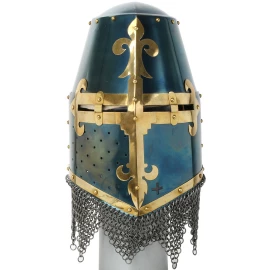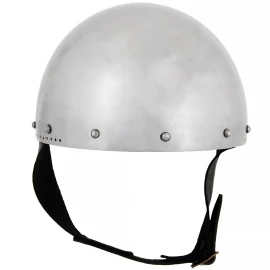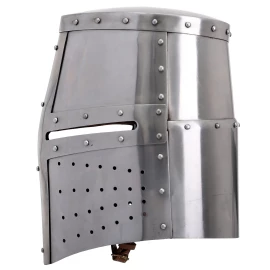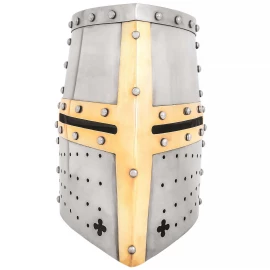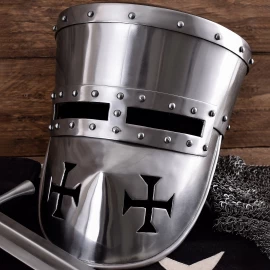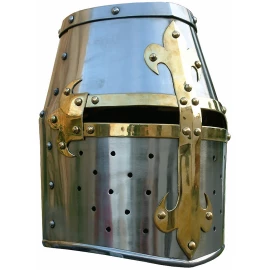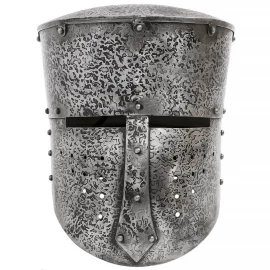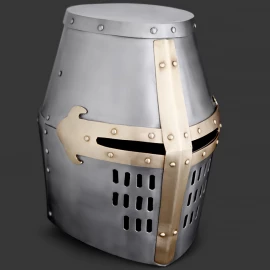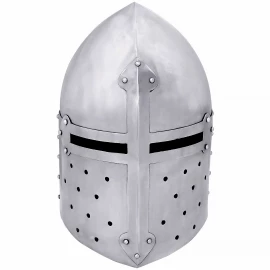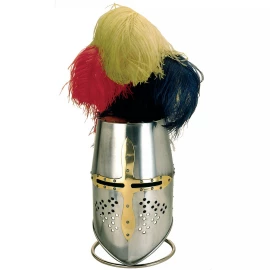Great helms
The great helm arose in the late twelfth century in the context of the crusades and remained in use until the fourteenth century. They were used by knights and heavy infantry in most European armies between about 1220 to 1540 AD. In its simplest form, the great helm was a flat-topped cylinder of steel that completely covered the head and had only very small openings for the eyes and mouth. Later designs gained more of a curved design, particularly on the top, to deflect or lessen the impact of blows.
Filter products
Great helm
The style is sometimes referred to as a 'crusader helmet', but also as a 'pot helm', and a later variant with a more conical top is known as a 'sugarloaf helm'. In Spanish they are called yelmo de Zaragoza, referring to Zaragoza where they were introduced for the first time in the Iberian peninsula.
Although the great helm offered greater protection than previous helmets, such as the nasal helm and spangenhelm, it limited the wearer's vision to some extent, and provided poor ventilation. A knight might wear the close-fitting steel skull cap known as a cervelliere, or its later development the bascinet beneath the great helm. A great helm may have also an attached mail collar, or camail, to protect the wearer's neck, throat, and shoulders.

